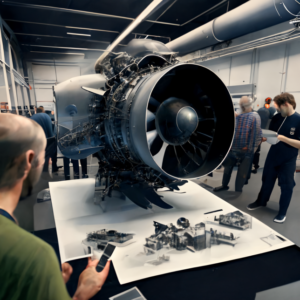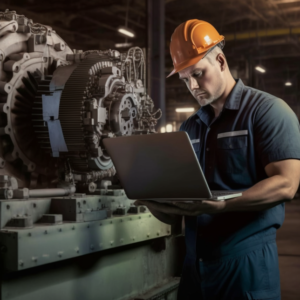Aircraft maintenance is an indispensable aspect of aviation law, serving as the bedrock for ensuring the safety, airworthiness, and operational efficiency of aircraft. Compliance with regulations is not merely a matter of best practices; it is a legal obligation that directly impacts the lives of passengers, crew members, and the general public.
Aircraft Maintenance Regulations and Standards
The FAA and EASA are examples of regulatory authorities that oversee the maintenance of aircraft in their respective regions.
In civil aviation, maintenance tasks, personnel, and inspection systems are regulated by national regulations that are coordinated under international standards established by the International Civil Aviation Organization (ICAO).

The following laws apply to aviation maintenance management:
- The aircraft must have an annual inspection (and 100-hour inspections if required).
- All airworthiness directives must be complied with.
- The Airworthiness Limitation Section of a manufacturer’s maintenance manual or Instructions for Continued Airworthiness must be complied with.
- The aircraft must be maintained in an airworthy condition.
Maintenance Requirements and Procedures
Aircraft maintenance encompasses a wide array of requirements and procedures aimed at maintaining safety and airworthiness.

Airworthiness Directives (ADs)
ADs are issued by aviation regulatory authorities, such as the Federal Aviation Administration (FAA) in the United States and the European Aviation Safety Agency (EASA) in Europe, to address safety concerns related to aircraft components or systems.
Compliance with ADs is a legal obligation for aircraft owners, operators, and maintenance organizations. Failure to comply with ADs can result in serious consequences, including grounding of the aircraft, fines, and even criminal charges.
Inspections, Checks, and Repairs
In addition to ADs, aircraft maintenance also includes a variety of inspections, checks, and repairs. These procedures are designed to ensure that all aircraft components are in good working condition and that the aircraft is safe to operate.
Inspections are typically performed on a regular schedule, such as before each flight, daily, weekly, or monthly. The frequency of inspections depends on the type of aircraft and its operating environment.
Checks are performed to verify that specific components or systems are operating properly. For example, a mechanic might check the tire pressure, the fluid levels, or the operation of the engines.
Repairs are performed to correct any defects that are found during inspections or checks. Repairs must be performed by qualified personnel using approved methods and materials.

Maintenance Personnel and Licensing
The competence and expertise of individuals involved in aircraft maintenance are critical in ensuring safety and airworthiness. To ensure that only qualified personnel work on aircraft, aviation authorities have established a system of certification and licensing for maintenance personnel.
Aircraft Maintenance Engineers (AMEs) and Mechanics
Aircraft maintenance personnel are broadly categorized into two main groups: Aircraft Maintenance Engineers (AMEs) and Aircraft Maintenance Technicians (AMTs).
Aircraft Maintenance Engineers (AMEs): AMEs are the most highly trained and qualified aircraft maintenance personnel. They are responsible for overseeing and managing aircraft maintenance programs, developing and implementing maintenance procedures, and certifying that aircraft meet all applicable safety standards. AMEs must have extensive knowledge of aircraft systems and structures, as well as a thorough understanding of aviation regulations.
Aircraft Maintenance Technicians (AMTs): AMTs are responsible for performing the hands-on work of aircraft maintenance, such as inspections, checks, and repairs. They must have a good understanding of aircraft systems and structures, as well as the ability to follow maintenance procedures and manuals carefully.
Certification and Licensing Requirements
To become an AME or AMT, individuals must undergo a rigorous certification and licensing process. This process typically includes the following steps:
- Education: AME candidates must typically have at least a bachelor’s degree in aviation maintenance or a related field. AMT candidates typically have an associate’s degree in aviation maintenance or a related field, or they may have completed an approved apprenticeship program.
- Experience: AME candidates typically need to have at least two years of experience working as an AMT before they can apply for their AME license. AMT candidates typically need to have at least six months of experience working on aircraft before they can apply for their AMT license.
- Examination: AME and AMT candidates must pass a series of written and practical examinations. These examinations cover a wide range of topics, including aircraft systems, maintenance procedures, and aviation regulations.
- Medical Certification: AME and AMT candidates must also meet certain medical standards in order to obtain their licenses. These standards are designed to ensure that maintenance personnel are physically and mentally fit to perform their duties safely.
Aircraft maintenance, deeply intertwined with aviation law, is a cornerstone of safety, airworthiness, and operational efficiency in aviation. Adherence to international and national regulations is imperative, as failure to comply can result in legal liabilities and safety risks. The aviation industry’s enduring success and safety hinge on the unwavering commitment to the law and the continuous improvement of maintenance practices.
Source:
